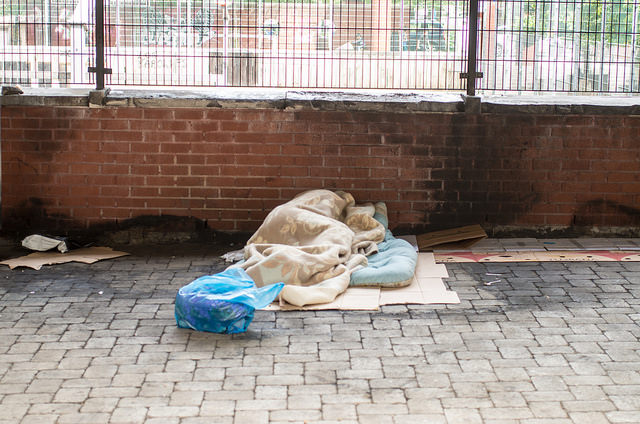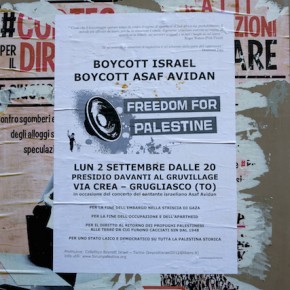As I was preparing to spend a year abroad in Germany, I agonized over one of the tips my exchange student organization had sent me. It encouraged us to photograph aspects of the United States that wouldn’t be familiar from watching American movies and television. But what came to mind for me were the homeless people I saw on every trip to Washington D.C.
Even as a teenager who had only spent a couple days outside my country, I was acutely aware of the bad reputation it held in much of the world. Part of the reason was because I grew up in the wake of the Vietnam War. And part of it was because Ronald Reagan was in the White House. While I had no problem critiquing the special blend of arrogance and ignorance that inspired chants of “Yankee, go home!” when I was still in the States, I had doubts about whether it would be appropriate to do so as a de facto emissary of my homeland.
Shouldn’t I aspire to teach my hosts something positive about American society, rather than giving them more reasons to think it deficient? What would they think if the slideshow I presented on “my” United States focused on the disturbing truth that the nation’s capital was awash in citizens without a place to sleep? In the end, though, I concluded that it was my duty to be as honest as possible. So I set off with my camera one day to document the city that both thrilled and embarrassed me, looking for precisely those juxtapositions that the tourist brochures refused to acknowledge.

As it turned out, the Germans I met weren’t all that interested how I experienced the United States. Over and over again, my host mother related the insights she had gleaned on a vacation there. “There are so many fat people! And it seems like all the handsome men are gay. But what I really couldn’t understand is why the government cares so little about the way the country looks. The poor are right there for everyone to see.”
Although she was more outspoken — and impolitic — than other Germans I got to know, I encountered muted versions of this assessment wherever I went. Even those who had never set foot in the United States — a smaller number than I’d anticipated, given the Federal Republic’s liberal vacation policies and strong economy — seemed to know a dozen people who had, the vast majority of whom had shared in this aesthetic critique of American society.
The longer I stayed in Germany, the better I understood their point of view. Workers vacuumed the busiest streets and sidewalks on a regular basis. And though unemployment was high by American standards, the combination of a robust safety net and a concerted effort to locate public housing units on the outskirts of cities —
as far as possible from shopping districts and the destinations tourists are likely to seek out — ensured that the visual landscape was not cluttered by sources of potential shame or anxiety.

Elsewhere in Europe, the contrast was not quite as sharp. But nowhere did I experience anything close to the near-constant confrontation with homelessness that had marked my trips to Washington D.C. or which would similarly shadow my years attending UC Berkeley. To be sure, there were always Obdachlosen to be seen, if you knew where to look. Yet because they were forced to congregate in place where transience was the norm, like the train stations that usually offered the only twenty-four shelter against the elements, the full impact of their status was diminished.
At times, this came as a relief. Every time I knew I’d be walking around Washington D.C. by myself, I made sure to carry a stack of quarters with me, knowing that I’d be asked for change. I wanted to help. But I suspect that I wanted to avoid the feeling of not being able to help even more. After all, it wasn’t as if the quarters I gave out were going to improve anyone’s day all that much. Still, to my sensitive teenage sensibilities, merely acknowledging the existence of the people who asked me for spare change instead of acting as if they were invisible felt like a victory against apathy. Sometimes, though, the energy these interactions required was more than I could muster, so I would decide to stay home amid the tedium of my semi-rural subdivision.
Yet for every occasion when I was glad not to have to come face to face with homelessness in Europe, there were several more when I found its invisibility disturbing. In my mind, this disappearing act started to merge with the other aesthetic imperatives governing urban life there. When I was going to visit a new city, I started making a point of finding out what it had looked like at the end of World War II, just so I could discern which of its architectural marvels had been reconstructed afterwards. This compulsion to discern the erasure of erasure eventually grew so strong that I couldn’t enjoy any tourist attraction that hadn’t survived the fighting more or less intact.

It got so bad that my one trip to East Berlin was a source of joy simply because not all of the rubble from the bombing had been cleared away, even forty years later. While comparing the concealment of destruction with the concealment of homelessness might not have been empirically valid, it made intuitive sense to me then. And it continues to do so now, to a degree, even though I can see how problematic it can be.
That’s why I’m so torn when I look at photographs of European cities today. On the one hand, it’s hard to witness so much suffering. Everywhere you look, even in the most privileged sectors of the developed world, the number of people actually managing to live comfortably is shrinking. Precarity, the state of being perpetually at risk, is a condition that penetrates further into the middle class each year. And that means that keeping up appearances — or, to be more precise, keeping up disappearances — is becoming harder and harder.
Perhaps because of my experiences as a teenager, I can’t help but think that some good might come of the increasing visibility of struggle. When it becomes impossible to pretend that most people can live better than their parents did, the pursuit of social and political change becomes more compelling. It’s no accident that the biggest achievements of the labor movement are rooted in the nineteenth century, when there was almost no safety net and the difference between the haves and have-nots was brutally apparent. As depressing as our own Gilded Age is, there’s a chance that the rapid rise in inequality will eventually lead to similar results.
Photographs courtesy of Joel Schalit.





